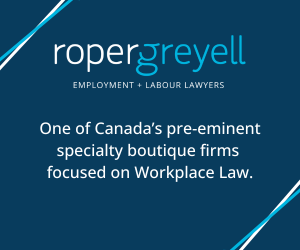Accessibility Makes Dollars and Sense
It’s time for businesses to stop looking at accessibility as the nice thing to do and focus on why it’s the financially smart thing to do.
In Canada, there are 8 million people with disabilities (PWDs) with a combined $47 billion disposable income. That’s the opposite of a niche market. When you consider the families and friends of PWDs, the consumer base grows to 12 million Canadians, or more than a third of the population, with an estimated disposable income exceeding $311 billion, based on 2020 statistics. These statistics are only growing. In fact, it is predicted that by 2040, the number of individuals with disabilities will rise to 40% of the population.
Despite the sheer number of PWDs, many businesses look at accessibility as a “nice” or “socially responsible” thing to do. From this viewpoint, investments in accessibility fall to the bottom of the budget list as a discretionary expense. Yet, by continuing to frame accessibility as purely a charitable initiative, companies are missing out on capitalizing on this incredibly lucrative consumer market.
According to StatsCan, 27% of Canadians aged 15 years and older have one or more disabilities that limit their daily activities. The rate of disability in Canada has increased by 5% since 2017, when 22% of Canadians, or 6.2 million people, had one or more disabilities. Six in 10 persons with disabilities (4.8 million people) experience barriers related to accessing indoor and outdoor public spaces. Barriers related to physical spaces, such as entrances and sidewalks, are the most common barriers (56%), followed by barriers related to communication (48%).
Part of the hesitation in reframing accessibility may come from brands that feel there will be internal and external resistance to labelling accessibility as a profit driver, but if you ask any PWD (including me), we will say that we relish being treated as consumers. I know I am not alone when I say that I will go out of my way to favour establishments and websites that make it easier for me to shop, eat, and do business. Why would anyone want the opposite?
When reframed as a business development opportunity, investing in accessibility becomes a no-brainer. Companies that are committed to disability-inclusive practices outperform their peers in revenue, net income, and economic profit, according to the Disability Equality Index.
They also get ahead of the policy curve. Legislation mandating additional accessibility measures is inevitable. All levels of government are mandated to make Canada more accessible to all its citizens and the federal government has committed to enforcing legislation that will ensure a “barrier-free society” by 2040.
Another reason many businesses are hesitant to develop accessibility programs for consumers is a lack of disability confidence in the workplace around supporting persons with disabilities. They simply don’t know where to start or how to navigate the process.
The solution is simple: hire more persons with disabilities and work with advisors with lived-experience. Imagine designing products, services and experiences for an audience that is not involved in the initial design and development phase. There is a clear connection between the number of employees with disabilities at a business and the number of consumers with disabilities it attracts.
Substance Accessibility is only one of a few Canadian B-to-B or B-to-C companies led by a person with disabilities that advises businesses how to leverage accessibility as a business driver. It helps brands strengthen their connection with the global disability market and provide equity for PWDs.
The first step businesses can take to become more accessible for their consumers is to conduct an accessibility audit that involves reviewing physical spaces, websites, products, and services to identify barriers that might prevent persons with disabilities from fully engaging with the business. Hiring an external consultant specializing in accessibility can provide an unbiased and thorough assessment. They can then implement physical accessibility improvements and enhance digital accessibility where needed.
Brands need to be disability intentional on everything they do, from hiring to designing services and products. When businesses invest appropriate resources, including time and funding, to become more accessible, they literally and figuratively open their doors to an important and increasingly growing market.
They also get ahead of the policy curve. Legislation mandating additional accessibility measures is inevitable. All levels of government are mandated to make Canada more accessible to all its citizens.
Mark Demontis is the Chief Accessibility Officer for Substance Accessibility. He is a leading accessibility strategist with 15 years of experience in the field. Having lost his sight at 17, he founded Canadian Blind Hockey for blind and partially sighted Canadians. Mark has also worked as the accessibility advisor to the Premier of Ontario and some of Canada’s top brands, including the NHL and Lululemon.









